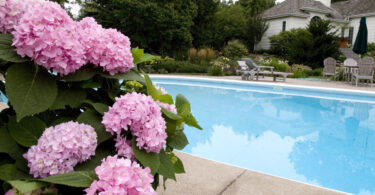Expert tips for selecting and maintaining a garden with indigenous plants.
Know what indigenous means
“When one thinks of indigenous plants, the thought of aloes and succulents often comes to mind. ‘Indigenous’ simply means that a plant originated within a national boundary drawn by humans. In South Africa, this means you have access to plants from various climate zones, and many of them will thrive in your environment.” – Craig de Necker, managing director of The Friendly Plant

Understand your plants
“When starting an indigenous garden, it’s a great idea to familiarise yourself with the plants native to South Africa. Indigenous plants typically originate from your area and grow naturally in South Africa. Some lovely flowering indigenous plants you can choose from are Agapanthus Buccaneer & Blackjack or Delosperma Wheels of Wonder, as well as the very popular Vygies.” – Stanley Schoeman, branch manager at Plantland Garden Centre

Know sunlight requirements
“As we all know, all plants have specific sunlight and soil conditions under which they thrive. For most indigenous plants, sunlight requirements vary from bright areas with full sun all day long. Indigenous plants also generally require less water than exotic plants, making them water-wise and suitable for all gardens in South Africa. All the plants mentioned above thrive in full sun with minimal water requirements, adding a burst of colour to your garden with their various flower colours.” – Stanley Schoeman, branch manager at Plantland Garden Centre

Incorporate indigenous plants gradually
“If you have existing exotic plants in your garden that you’re looking to replace with indigenous species, consider initially planting the indigenous plants alongside the exotics. Over time, remove the exotics as the indigenous plants mature. Before you know it, you’ll have established an indigenous garden without experiencing a ‘blank canvas’ moment.” – Craig de Necker, managing director of The Friendly Plant

Hydrozone 101
“Hydrozoning is a landscaping technique that involves grouping plants with similar watering needs, whether they require very low, low, medium, or high levels of water. When applied to indigenous plants, hydrozoning offers numerous advantages, including water and time savings, enhanced resilience, contributions to species richness, and increased sustainability and biodiversity. In winter rain regions, suitable low-hydrozone plants include Buchu, Wintersweet, Dune poison brush, Bushman poison, and Namaqua marigold. For summer rain regions, low-hydrozone plant options consist of Baobab, Sabie lily, Impala lily, Bitter gousblom, and Guinea-fowl aloe.” – the Life is a Garden info team

Harvest rainwater
“This summer is predicted to be exceptionally hot and dry, so make the most of rainwater harvesting and start your indigenous hydrozoning now. With a bit of redesigning, you can easily establish a low-maintenance, lush landscape. Create stunning mixed containers that attract a host of beneficial insects and essential pollinators, all while conserving water. Obtain these plants, compost, fertiliser, and potting soil from your local garden center and enjoy falling in love with South Africa’s indigenous splendour this summer.” – the Life is a Garden info team

Featured image: Life is a Garden










Leave a Comment